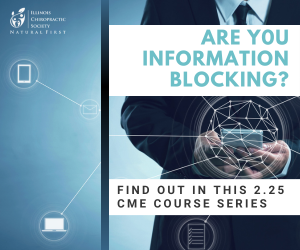
Tennis Elbow or Radial Tunnel Syndrome

Chiropractors are well suited to recognize and manage lateral epicondylitis. In fact, we often jump to the diagnosis within seconds of hearing the patient’s history. Unfortunately, not all pain near the lateral epicondyle is simply from tennis elbow. Radial tunnel syndrome can mimic or even coexist with lateral epicondylitis and recognizing this presentation will afford better clinical outcomes.
Radial Tunnel
The radial tunnel is defined as the space surrounding the radial nerve as it traverses the posterior forearm from the radiocapitellar joint thru the supinator muscle. (1) “Radial tunnel syndrome” describes symptoms generated from irritation or compression of the radial nerve within this 2” tunnel.
There are multiple potential sites of compression in the radial tunnel that may affect the sensory branch of the radial nerve, the motor branch- also called the posterior interosseous nerve or both. (2) Compression of the superficial sensory branch (Wartenberg’s syndrome) results in purely sensory symptoms while compression of the posterior interosseous nerve produces motor weakness of the finger, hand and wrist extensors.
The most common site of compression within the radial tunnel is beneath a thickened, fibrous proximal edge of the supinator muscle, also called the arcade of Froshe. This thickening is thought to be developmental as a result of repetitive strain and is present in 30-80% of the population. (3,4) Compression of the posterior interosseous nerve beneath the arcade of Froshe is sometimes referred to as “Supinator syndrome” and accounts for almost 70% of all radial tunnel presentations. (3) Other sites of entrapment include the distal border of the supinator muscle and beneath the origin of the extensor carpi radialis brevis muscle. (5,6)
Causes
Radial tunnel syndrome occurs less frequently than its more common upper extremity cousins- carpal tunnel syndrome and cubital tunnel syndrome. (7,8) Radial tunnel syndrome frequently accompanies these and other co-morbidities including pronator syndrome, Guyon’s syndrome, medial epicondylitis, de Quervain’s tenosynovitis, trigger finger and lateral epicondylitis. (9) Research suggests that up to 10% of patients with lateral epicondylitis have co-existent radial tunnel syndrome. (10) Radial tunnel syndrome is thought to result from overuse, especially excessive wrist extension, pronation or supination. (27)
Presenting symptoms depend on whether irritation affects the sensory branch, motor branch or both. Compression or irritation of the superficial sensory branch results in pain, paresthesia or diminished sensitivity along the dorsal aspect of the forearm sometimes radiating to the hand, including the first web space and back of the thumb and index finger. (11) These symptoms are often described as deep, aching and diffuse, sometimes mimicking lateral epicondylitis. (12) Compression of the posterior interosseous nerve (motor branch) manifests as weakness of metacarpal phalangeal joint extension and thumb extension, also called “finger drop”. (2) Wrist extension is generally not affected as noticeably because of cross-innervation.
Diagnosing
Deeply palpating and rolling your fingers over the radial nerve four finger breaths distal to the lateral epicondyle should provoke symptoms (Radial tunnel compression test). (13) Symptoms are generally intensified by resisted wrist extension, supination, and pronation. Resisted muscle testing can help localize the site of compression. (14) Reproduction of symptoms upon resisted supination, when the arm and wrist are in extension, suggests compression at the arcade of Froshe (Resisted supination test). Reproduction of symptoms during resisted extension of the middle finger suggests compression of the posterior interosseous nerve beneath the extensor carpi radialis brevis (Resisted long finger extension, aka, Middle finger sign). (13) Tinel sign or reproduction of symptoms by percussion of the radial nerve is infrequently present.
Seventy percent of patients with lateral elbow pain demonstrate symptoms or positive clinical findings in the cervical or upper thoracic regions. Positive findings include a limited range of motion in flexion and extension and positive provocation testing. (15) Neurodynamic testing/ tensioning of the radial nerve may provoke symptoms.
Palpation elicits tenderness over the radial nerve and sometimes over the lateral epicondyle making differentiation of the two conditions challenging. The pain of radial tunnel syndrome should be more acute distally. (16) Nocturnal pain is more common in radial tunnel patients than those with lateral epicondylitis. (17) Other differential diagnostic considerations for radial tunnel syndrome include bone pathology, brachial plexus injury, cervical radiculopathy, de Quervain’s tenosynovitis, elbow bursitis, elbow sprain/strain/tendinopathy, peripheral neuropathy and thoracic outlet syndrome.
Radiology
Radiographs are seldom indicated unless needed to rule out osseous pathology. Ultrasound and MRI may be used to detect space-occupying lesions and to localize the specific site of nerve involvement. (18,19) EMG/NCS studies are typically negative but may highlight muscle innervation deficits in cases with significant posterior interosseous nerve involvement. (20,21)
Treatment
Conservative management of radial tunnel syndrome is generally successful. (22) Initial management of radial tunnel syndrome includes anti-inflammatory measures, rest and avoidance of aggravating activities. Ice, ice massage and electrotherapy may provide benefit. Pulsed ultrasound has been shown to be effective in the management of other upper extremity compressive neuropathies. The suggested settings for pulsed ultrasound are frequency – 1 MHz; intensity – 1 watt/cm squared; duty cycle – 25%. (23)
Patients should limit excessive or repetitive wrist extension, forearm pronation, and supination. Splinting may be used in more severe cases. (24) Sources of external compression should be identified and removed. A tennis elbow counter-force brace, commonly used in the treatment of lateral epicondylitis, will likely aggravate the symptoms of radial tunnel syndrome. (25)
Conclusion
Soft tissue manipulation and nerve flossing are useful tools in the management of radial tunnel syndrome. Good clinical judgment is required to assess the point at which the benefits of soft tissue mobilization outweigh the risks of symptom exacerbation. When the symptoms are no longer acute, stretching and myofascial release techniques should be directed at the supinator, brachioradialis and wrist extensors, including the extensor carpi radialis brevis. Nerve flossing is thought to enhance the neurodynamic flexibility of a nerve by releasing adhesions, and it should not provoke symptoms. Radial nerve flossing is performed with the patient standing, shoulder blade pressed down, and wrist flexed with the fingers pointing backward, i.e., Butler tip position, while bending the head in the contralateral direction and reaching back with the arm. Since cervical and upper thoracic involvement is common, clinicians should assess for and manipulate any spinal restrictions. (15)
Surgery may be indicated for patients who fail 12 weeks of conservative care or for those with a significant motor deficit. (26)
References
1. Rosenbaum R: Disputed radial tunnel syndrome. Muscle Nerve 1990, 22:960-967
2. Kirici Y, Irmak MK: Investigation of two possible compression sites of the deep branch of the radial nerve and nerve supply of the extensor carpi radialis brevis muscle. Neurol Med Chir (Tokyo) 2004, 44:14-18.
3. Ferdinand, B.D., Rosenberg, Z.S., Schweitzer, M.E., Stuchin, S.A., Jazrawi, L.M., Lenzo, S.R., Jul 2006. MR imaging features of radial tunnel syndrome: initial experience. Radiology 240 (1), 161e168
4. Clavert P, Lutz JC, Adam P, Wolfram-Gabel R, Liverneaux P, Kahn JL. Frohse’s arcade is not the exclusive compression site of the radial nerve in its tunnel. Orthop Traumatol Surg Res 2009; 95:114 –118
5. Portilla Molina AE, Bour C, Oberlin C, et al. The posterior interosseous nerve and the radial tunnel syndrome: an anatomical study. Int Orthop.1998; 22:102–106.
6. Roles NC, Maudsley KH. Radial tunnel syndrome: resistant tennis elbow as nerve entrapment. J Bone Joint Surg Br.1972 ;54:499–508.
7. Loh YC, Lam WL, Stanley JK, Soames RW: A new clinical test for radial tunnel syndrome – the Rule-of-Nine test: a cadaveric study. J Orthop Surg (Hong Kong) 2004, 12:83-86
8. Latinovic R, Gulliford MC, Hughes RA. Incidence of common
compressive neuropathies in primary care. J Neurol Neurosurg Psy-
chiatry 2006;77:263–265
9. John Houle, Matthew J Concannon, Michael Neumeister, Richard Brown, Bradon Wilhelmi. Upper Extremity Co-Morbidities in Patients with Radial Tunnel Syndrome. J reconstr Microsurg 2005; 21 – A025
10. Spinner M, Spinner RJ. Management of nerve compression lesions of the upper extremity. In: Management of Peripheral Nerve Problems, 2nd ed. 1998, Philadelphia, WB Saunders, pp. 501-533.
11. Theodore T. Miller, William R. Reinus. Nerve Entrapment Syndromes of the Elbow, Forearm, and Wrist. AJR
2010; 195:585 –594
12. NS, Korday SN, Bainbridge LC. Radial tunnel syndrome: diagnosis and management. J Hand Surg [Br].1998; 23:617–619
13. Lister G. The Hand: Diagnosis and Indications. 1984, New York, Churchill Livingstone.
14. Henry M, Stutz C. A unified approach to radial tunnel syndrome and lateral tendinosis. Tech Hand Up Extrem Surg. Dec 2006;10(4):200-5
15. K.M. Berglund, B.H. Persson, E. Denison. Prevalence of pain and dysfunction in the cervical and thoracic spine in persons with and without lateral elbow pain. Manual Therapy 13 (2008) 295–299
16. Lister GD, Belsole RB, Kleinert HE. The radial tunnel syndrome. J Hand Surg [Am].1979; 4:52–59
17. Hammer W. Is it Tennis Elbow or Radial Tunnel? Dynamic Chiropractic – December 29, 1997, Vol. 15, Issue 26
18. Ogino T, Minami A, Kato H: Diagnosis of radial nerve palsy caused by ganglion with use of different imaging techniques. J Hand Surg Am 1991, 16:230-235.
19. Lo YL, Fook-Chong S, Leoh TH, Dan YF, Tan YE, Lee MP, et al. Rapid ultrasonographic diagnosis of radial entrapment neuropathy at the spiral groove. J Neurol Sci. Aug 15 2008;271(1-2):75-9.
20. Barnum M, Mastey RD, Weiss AP, Akelman E. Radial tunnel syndrome. Hand Clin. 1996;12(4):679-689.
21. Dang AC, Rodner CM. Unusual compression neuropathies of the forearm. Part I. Radial nerve. J Hand Surg Am 2009; 34:1906–1914
22. Lanzetta M, Foucher G. Entrapment of the superficial branch of the radial nerve (Wartenberg’s syndrome): a report of 52 cases. Int Orthop 1993;17:342–345
23. Ebenbichler GR, Resch KL, Nicolakis P, et al. Ultrasound treatment for treating the carpal tunnel syndrome: randomized ‘‘sham’’ controlled trial. BMJ. 1998;316:731-735.
24. Jacobson JA, Fessell DP, Lobo Lda G, Yang LJ. Entrapment neuropathies I: upper limb (carpal tunnel excluded). Semin Musculoskelet Radiol. Nov 2010;14(5):473-86.
25. http://www.mdguidelines.com/neuropathy-of-radial-nerve-entrapment Radial Nerve Entrapment. July 2013
26. Ferdinand BD, Rosenberg ZS, Schweitzer ME, Stuchin SA, Jazrawi LM, Lenzo SR. MR imaging features of radial tunnel syndrome: initial experience. Radiology. Jul 2006;240(1):161-8.
27. Roquelaure Y, Raimbeau G, Dano C, Martin Y-H, Pelier-Cady M-C, Mechali S, Benetti F, Mariel J, Fanello S, Penneau-Fontbonne D. Occupational risk factors for radial tunnel syndrome in industrial workers. Scand J Work Environ Health 2000;26(6):507-513.

















